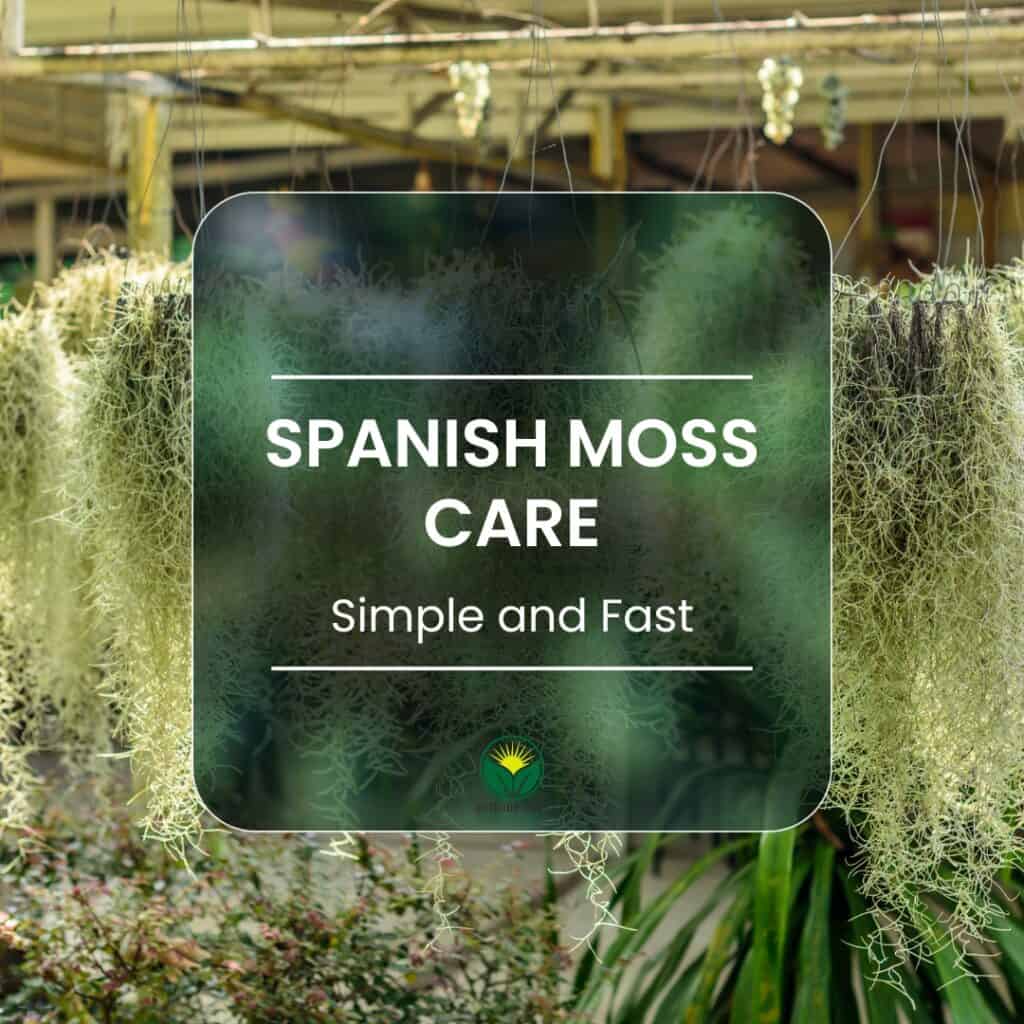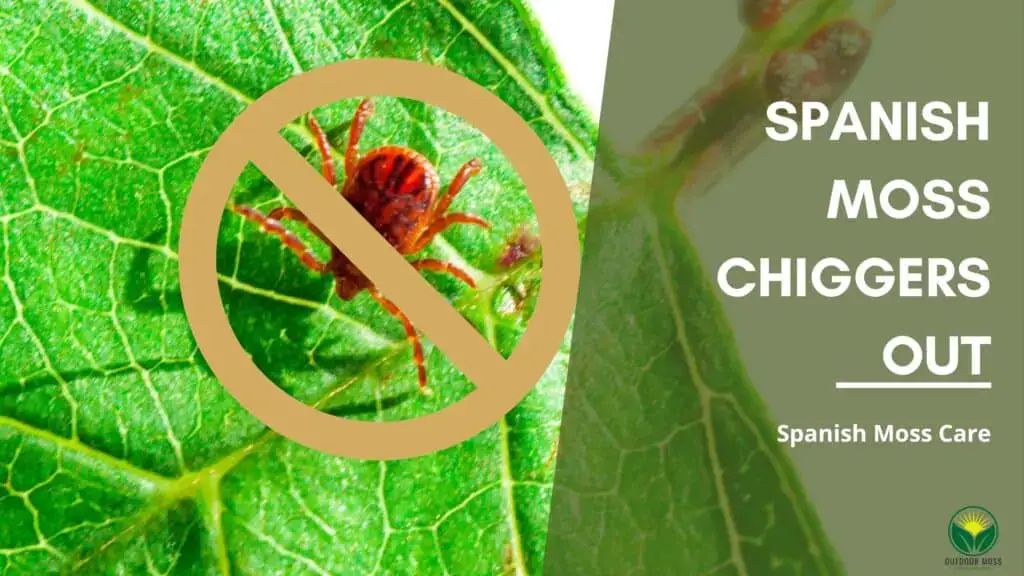
Spanish moss also called Spanish beard (Tillandsia usneoides) is a type of so-called aerial plant and is not a true moss but belongs to the bromeliad family and are epiphytes, meaning they use plants or other structures to support them .
Despite the name, it is not native to Spain but to the southeastern United States.
The peculiarity of Spanish moss is that it has no roots and uses the tiny scales on its stems and leaves to capture nutrients present in the humidity in the air.
Since it feeds on the water present in the air, it prefers very humid environments, and from North Carolina to Texas, it is typical to find it hanging down on old trees or dry branches.
Spanish moss can also be grown indoor (which I am doing) with regular misting and humid conditions.
As an epiphytic aerial plant, it can be placed or hung wherever you want, even in a terrarium. It would help if you remembered, however, that it feeds on the humidity from the air, so nebulize it regularly.
If your terrarium design involves a lot of moisture, it can be an excellent and versatile choice.
In addition to its decorative value, it has a number of practical uses. In the post-war period, Ford used it as a padding material, or it can be found as an insulator in various projects.
He is also a gourmet of harmful substances such as cigarette smoke.
To identify Spanish moss, look for dense, hanging clumps that look like gray moss and have no roots. The leaves are cylindrical and covered with gray scales.
Main characteristics of Spanish moss.
| Gender: | Tillandsia |
| Species: | usneoides |
| Family: | Bromeliads |
| Recommended propagation strategy: | Division |
| Country or region of origin: | South East North America, South America |
| Wildlife: | Different types of birds use Spanish moss as nesting material. When bats find it, they use it as a foothold, and a type of spider feeds on it. |
| Flowering: | Spanish moss blooms in summer/fall with small fragrant flowers less than an inch in size and blue or green. |
| Lighting: | It can stand in full sun, but it is always preferable that it does not take direct sunlight. |
| Watering: | Nebulization:1 time every 2 days Immersion: once every 2 weeks or so |
How much light does Spanish moss need?
How much water does Spanish moss need?
Spanish Moss Watering

Let’s face it right away, everyone frequently recommends nebulizing Tillandsia usneoides, and this is good, but more is needed, especially if you keep it at home.
Spanish moss needs consistent and abundant moisture. In their natural habitat, they receive this humidity from the air and rain.
Unless you live in a greenhouse (and I hope not for you), you will need to provide it with more water every now and then. Now I’ll tell you how.
To water the Spanish moss, carry out a regular nebulization; even one nebulization every two days is enough if the leaves are dry. The beauty of this plant is that it changes color as it touches the water, so it will be easy to ascertain the degree of humidity.
Every 15 days or so, I suggest you immerse the moss completely in room-temperature water and leave it to soak for about 30 minutes.
Once this is done, dry the plant well with a cloth and put it back in its preferred growth position.
As you can see, it’s not difficult, but it doesn’t have the classic irrigation path of a common houseplant.
Nebulization: 1 time every 2 days
Immersion: once every 2 weeks or so
Spanish Moss Lighting

Be prepared to receive the most contradictory answers. It’s amazing how many different interpretations can be found regarding Spanish moss lighting, not only among enthusiasts but also in the scientific field.
For example, according to the University of North Florida, you need to expose your Tillandsia to the full sun. (https://www.unf.edu/botanical-garden/plants/tillandsia-usneoides.html)
Whereas if you listen to the University of Central Florida, you have to go the other way around and put the Spanish moss in a full shade condition (https ://arboretum.ucf.edu/virtual/spanish-moss/).
As always, the old sayings come our way, and I can tell you the truth lies somewhere in between. They haven’t actually gone crazy; the fact is that Spanish moss manages to grow under various conditions.
In terms of lighting, I have found Spanish moss to prefer indirect sunlight. It will grow best in a location that receives a few hours of indirect sunlight daily, such as near a window that receives indirect light.
It does not grow well in direct sunlight and can suffer sunburn when exposed to it for long periods; the same goes for full shade.
So expose your Tillandsia Usneoides to indirect sunlight, and you will see that you won’t have any problems.
Lighting:
It can stand in full sun, but it is always preferable that it does not take direct sunlight.
How to hang Spanish Moss
Tillandsia usneoides is, as I said, an aerial plant without roots that do not require the use of soil. It lives to hang and can raise some perplexity about how to hang it.
The limit is your imagination; I’ll show you some examples of how to hang Spanish moss; the only precaution you have to keep is that the part in contact with the structure or hook will tend to dry out and turn brown, so I advise you to minimize the contact points.
Wire hangers: You can use wire hangers or other thin, flexible wire to make simple hooks or frames for hanging Spanish moss (you can see in my photo that I used a plastic hook strung on a string. Just shape the wire into the desired shape, such as a wreath or a heart, then wrap Spanish moss over the wire frame.
Plants in the garden: You can also put Spanish moss hanging outdoor from the branches of trees in the garden; this is often how we will find it in the wild.
Macrame Hangers: You can make a macrame hanger using twine or twine and then wrap Spanish moss over the hanger. This creates a rustic, bohemian look and is a great way to add a touch of greenery to a room.
Hanging Baskets: Spanish moss can also be placed in hanging baskets and hung from the ceiling or wall. Works well in a bathroom or other area with high humidity.
Spanish moss fertilizer
If you really want, you can fertilize Spanish moss using orchid or bromeliad fertilizers. Surely the fertilizer will make your moss grow, but I strongly advise against it.
In fact, you must know that Spanish moss is an excellent air filter; it is able to absorb many pollutants of various kinds, experiments have even been conducted on air quality using Spanish moss (American Museum of Natural History ), but if you fertilize it, the moss will not ” will feel” the need to eat these substances because he is already full.
So, avoid fertilizers.
How propagating Spanish Moss

Propagating Spanish moss is really easy. I could tell you to cut it and hang the cut part in a different place; as I said, very easy. Below I list a more detailed procedure if you are afraid of making mistakes.
To propagate Spanish moss, you can follow these steps:
1. Pick a small piece of Spanish moss from a healthy plant. You can do this by gently peeling off a small piece of moss or cutting it with scissors.
2. Put the piece of Spanish moss in a container with water. The water must be at room temperature and must not contain chlorine or other chemicals.
3. Let the Spanish moss soak in the water for at least 1 hour. This will help him rehydrate and become more flexible.
4. After that, remove the Spanish moss from the water and gently wipe off the excess water.
5. Hang the Spanish moss from a hook hanging from a net or wire. Make sure the Spanish moss is secure and will not fall.
6. Place the Spanish moss in a location with bright, indirect sunlight and high humidity. A bathroom or other wet area is a good choice.
7. Keep Spanish moss moist by misting it regularly or placing it in a location with high humidity. You can also use a plastic bag to create a moist environment around the seedling.
8. Armed with patience, Spanish moss will start to grow slowly but steadily.
Not being a natural moss, Tillandsia Usneoides can also be grown from seeds like a normal seedling.
Spanish Moss Flowering care
As we have seen, to propagate Spanish moss, it is enough to take some stems and grow them separately from the main plant, but since Spanish moss is not a true moss, it also has flowers and, consequently, seeds as a method of reproduction.
Spanish moss flowers are not famous for their color; you will have difficulty seeing them but not hearing them; they give off a sweet fragrance, especially at night.
To make your Spanish moss flower, you don’t have to do anything in particular; it will take care of it when it’s time. Generally, Tillandsia usneoides have a long flowering that can last several months between summer and autumn, followed by the seeds’ release. Flowering does not require special or additional care.
Do I risk chiggers with Spanish moss?

Let’s immediately dispel a false myth. Spanish moss is often and erroneously thought to carry chiggers or redbugs; this false myth is because these insects have often been found among pieces of fallen Spanish moss.
In reality, this happens only with the fallen pieces that are used by the chigger to repair itself (University of Florida) like any vegetation material it finds in its habitat.
In hanging Spanish moss, chiggers do not live. Other insects can be found in Spanish moss, especially when kept outdoors, but even then, it is used as a shelter and not a feed item.
Spanish moss does not kill your plants.
Another myth to dispel is that of Spanish moss-killing plants. This is totally false; it is not a parasite but uses tree branches as mere support. So don’t be afraid to hang your moss on other plants because it is absolutely not harmful.
What to do if Spanish moss turns brown?
There are several possible reasons why Spanish moss (Tillandsia usneoides) can turn brown, and they are more or less the same as other mosses:
Lack of Water: To stay healthy, Spanish moss must be kept at the right humidity level.
Be sure to observe the watering directions above.
Too much direct sun: Exposure to direct sun can “burn” Spanish moss and cause it to turn brown. Move it to an area where it gets indirect light.
Too Much Fertilizer: Over-fertilizing can cause Spanish moss stems to turn brown. Please do not overdo it.
If your Spanish moss is completely brown, you have won a nice natural packaging material. However, if there are still green areas, you can consider removing the brown parts, following the instructions I have given you, and waiting for it to grow back green and lush.